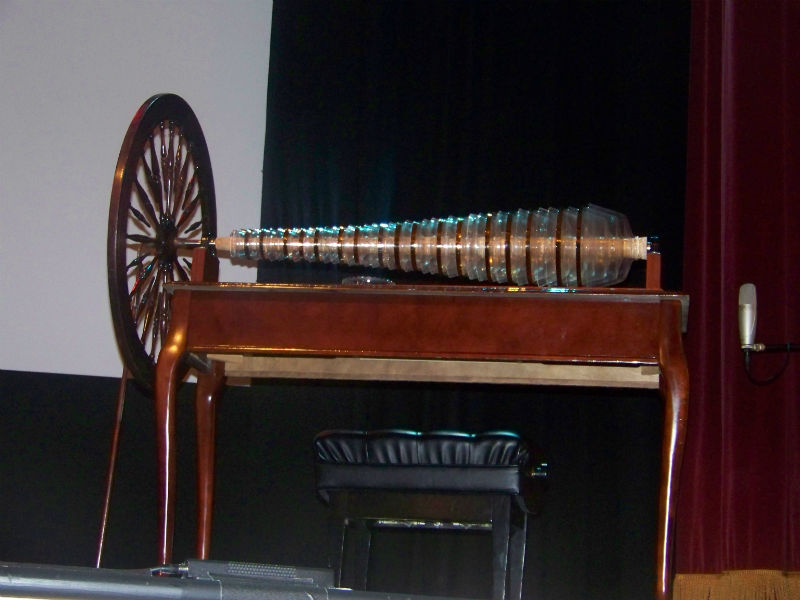In addition to being one of the Founding Fathers of the United States, Benjamin Franklin (1706-1790) made a significant impact as an author, inventor, scientist, publisher, and politician. His work included contributions in the field of music.
Franklin had an appreciation for music since his early childhood. He could play the guitar, harp, and violin, and had very definite opinions about what constituted good music. For example, he praised the melodies and harmonies of old Scottish tunes but was critical of the modern music of his day. He made his point by writing that George Frideric Handel’s opera, Judas Maccabaeus, had too much repetition and incorrectly placed accents.
While Franklin lived in England as an agent or representative for the colonies on various issues, he became interested in a popular form of musical entertainment. A person would rub their fingers around the rim of wine goblets on a table filled with different amounts of water. The resulting sound would be a different pitch based on how much water was in each goblet. In 1761, he combined his passion for inventions and music to build a mechanical version which he called the armonica, also known as the glass harmonica or glass armonica.

He enlisted the help of Charles James, a glassblower in London, to create 37 glass bowls of various sizes. The large bowls were the lower-pitched notes; the small bowls were the higher pitches. All the bowls had an opening in the middle so they would fit on an iron spindle in order according to size. Instead of being stacked upright, they were arranged horizontally and fit inside a case. A wheel was attached to the large bowl end of the spindle and also attached to a foot treadle, similar to a spinning wheel.
The color of the bowl rim represented a note on the musical scale. All the bowls that were tuned to a C, regardless of whether it was a high or low C, were red around the rim. All the Ds were orange, and so on with each note on the scale indicated by a different color.
The performer sat facing the instrument, using the foot treadle to start the spindle turning. The sound was created when the performer applied a wet finger to the rim of the glass. When the armonica was first introduced in concert in 1762, Marianne Davies was the performer. She was very skilled at playing the armonica and toured throughout Europe. Her concerts attracted prominent composers such as Mozart and Beethoven who wrote for the instrument.
There is a difference of opinion among scholars as to whether or not Franklin composed a string quartet. The work was written around 1778 when he was living in Paris. The manuscript credits him but the handwriting is not his. The quartet is unusual in many ways. It is for three violins and one cello instead of the traditional two violins, one viola, and one cello. All the instruments are supposed to retune to different pitches. This technique, known as scordatura, was used sparingly in the 19th century for tone color effect.
Scholars agree that this work was written as a type of entertainment or musical joke for gatherings in Parisian homes. Instead of each instrument taking a turn at playing a melody, each note of the melody is played by a separate instrument. The first note of the melody would be played by the first violin, the second note by the second violin, and so on until the end of the melody.
His contributions to music were an extension of his interest in puzzles, problem-solving, and inventions. The glass armonica was named after the Italian word for harmony.

